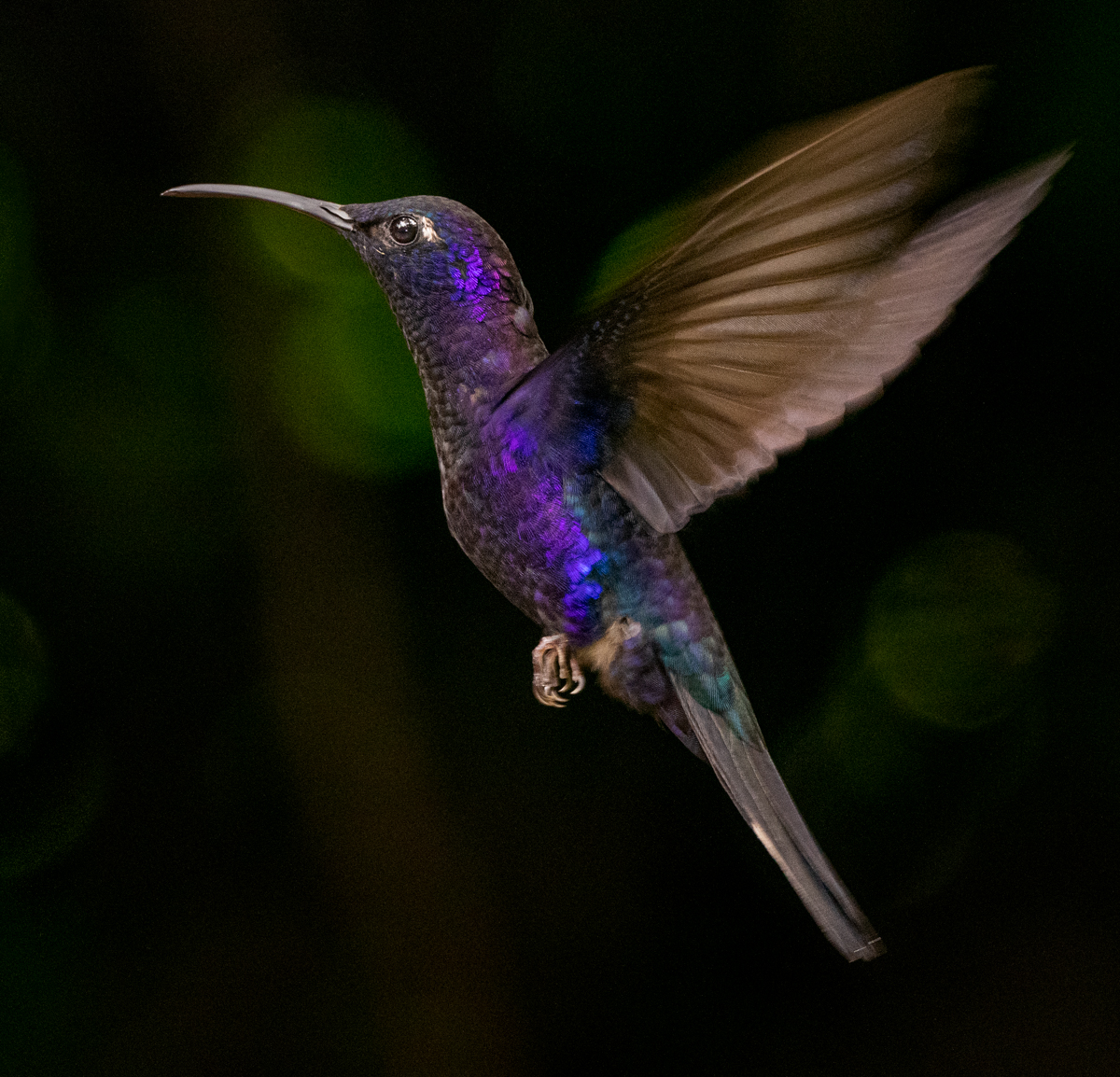
The diversity of bird plumage is visually stunning, be it glaring blocks of color or subtle shading. Many of us rely on our knowledge of bird plumage to help us ID species, which is one among many tools we have to further our knowledge of the thousands of the world’s species. In our series on bird plumage colors, today we look at three species whose signature hue is perhaps one of the most alluring – purple.
Purple in nature is not exactly commonplace, but it is a glorious color that never fails to uplift the soul when seen. Bird plumage has some dazzling shades of purple which is a result of either structural coloration, where the way the feathers refract and reflect light wavelengths, or from pigmentation, usually carotenoids consumed via fruits and insects that are then passed into the feathers as they grow. Let’s look at four purple beauties from the bird world who wear their colors loud and proud.
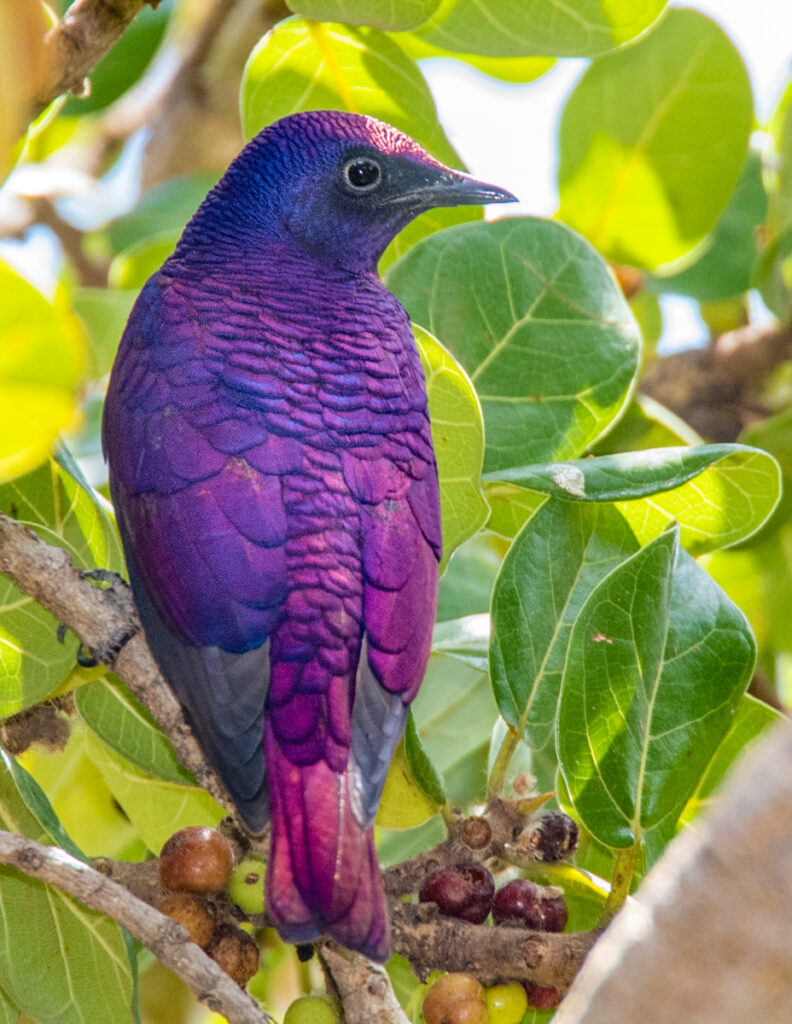
Violet-Backed Starling
Also known as the amethyst or plum-colored starling, this frankly breathtaking bird is the smallest member of the starling family and can be found in the savannah forest edges of sub-Saharan Africa. Strongly sexually dimorphic, males possess the glossy purple feathers on their back, which radiate a vibrant iridescence when the light hits them, and contrast beautifully with the bright white of their chests. The purple hue in the feathers is a result of structural coloration, where the microscopic arrangement of feather cells causes light to scatter and reflect specific wavelengths, producing that vivid purple color. Owen captured this one on a trip to the Northern Serengeti of Tanzania in 2017.
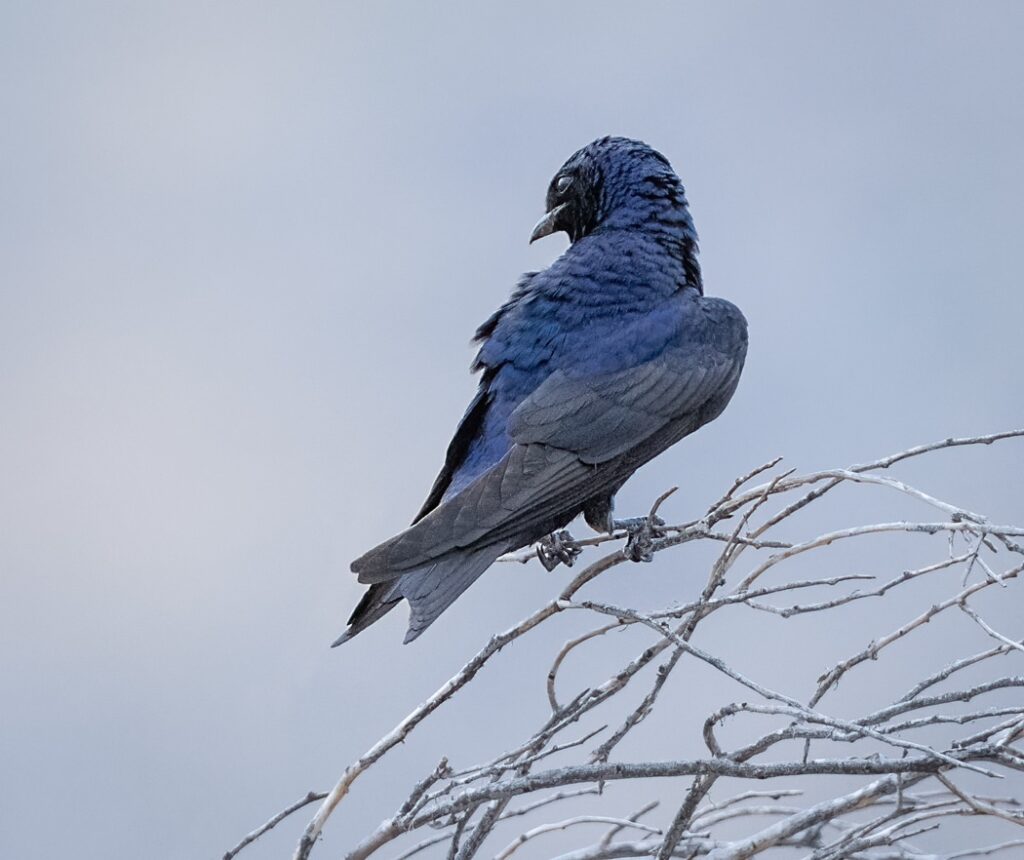
Purple Martin
As you can see in the photo here, despite their claim in the name, the purple martin’s plumage is not truly purple but rather a deep, glossy blue-black. However, you can occasionally see iridescent purple hues when viewed under certain lighting conditions, because, similar to the violet-backed starling, the purple martin’s plumage coloration is also a result of structural coloration caused by the microscopic structure of its feathers. Some lighting even makes their feathers look green. Their characteristic rapid flapping and gliding flight is thought to enhance these kaleidoscopic displays as part of their mating rituals, although both the male’s plumage and the female’s steely blue coloring takes around two years to fully materialize. Purple martins are North America’s largest swallow family member, and their chirping and chortling rattles and croaks are welcome sounds in the skies as they return to their breeding grounds across the continent as early as January for the southern states into late May when they finally reach Canada.
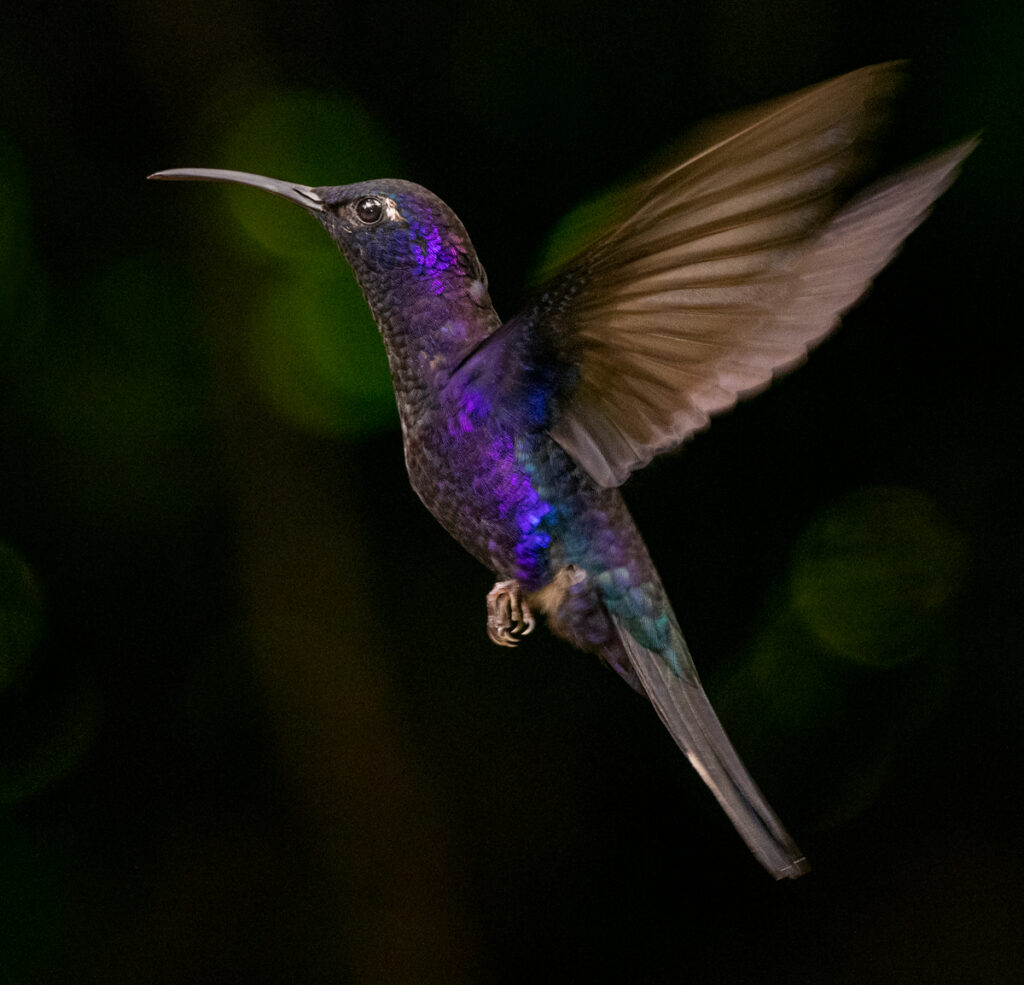
Violet Sabrewing
Hummingbirds are in a class of their own when it comes to plumage colors, and no list would be complete without the impressively titled violet sabrewing. Renowned for its dazzling plumage, this large and somewhat aggressive hummer inhabits the mountainous regions of southern Mexico down to Panama and proudly displays rich shades of purple and green which can almost appear black when the light hides away. The sabrewing’s throat and crown shimmer and change color as the bird moves, mesmerizing displays employed during courtship rituals to attract female mates.
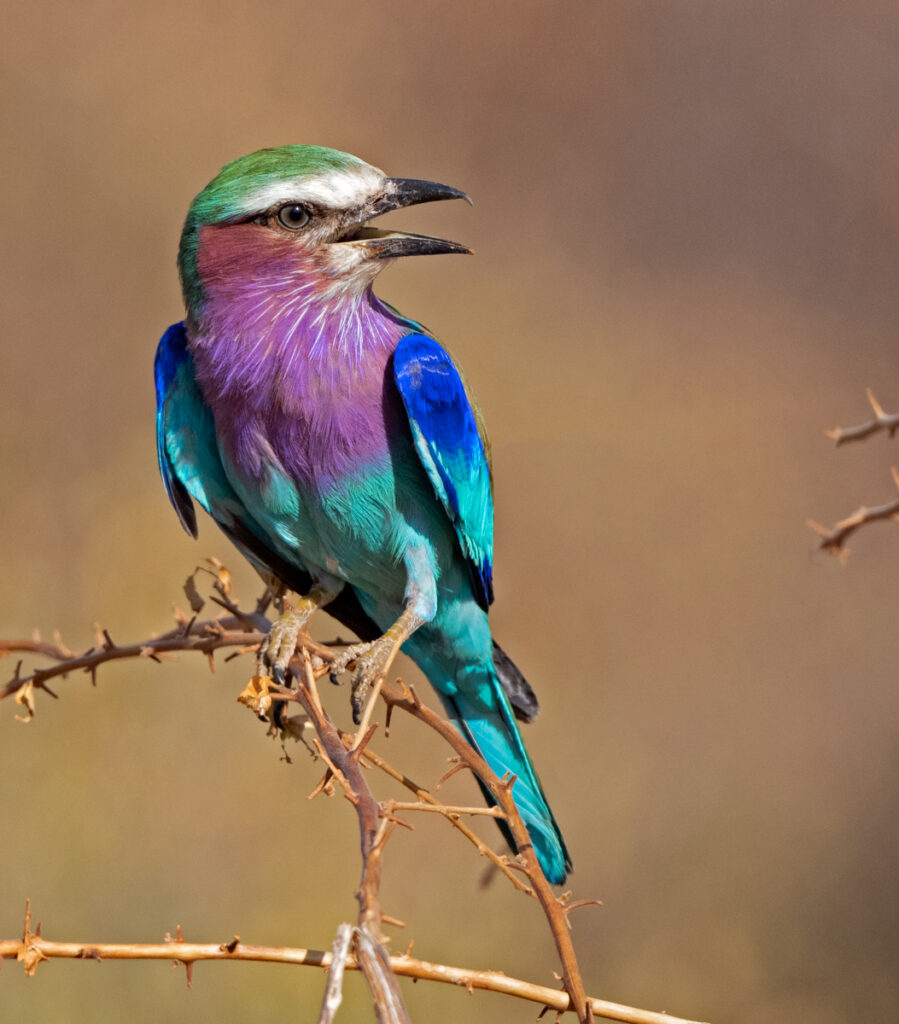
Lilac-Breasted Roller
These simply beautiful birds look like they have been dipped in paints mixed by Atlantean gods and then slowly left to dry in the glow of multiple suns. The turquoise wings, back and tail provide the perfect complementary palette to the eponymous light purple breast feathers, above which sits a bold large head capped in green and white bands. The strong decurved beak makes short work of grasshoppers, beetles, and termites as well as small reptiles and rodents – even other birds – as this omnivorous species dines out. Lilac-breasted rollers take the last art of their name from their aerial displays during courtship, performing impressive maneuvers, swooping, diving, and rolling to show off their captivating plumage. Highly sought after by birdwatchers and photographers, Owen managed to take several shots of these amazing birds on a trip to Kenya in 2017.



